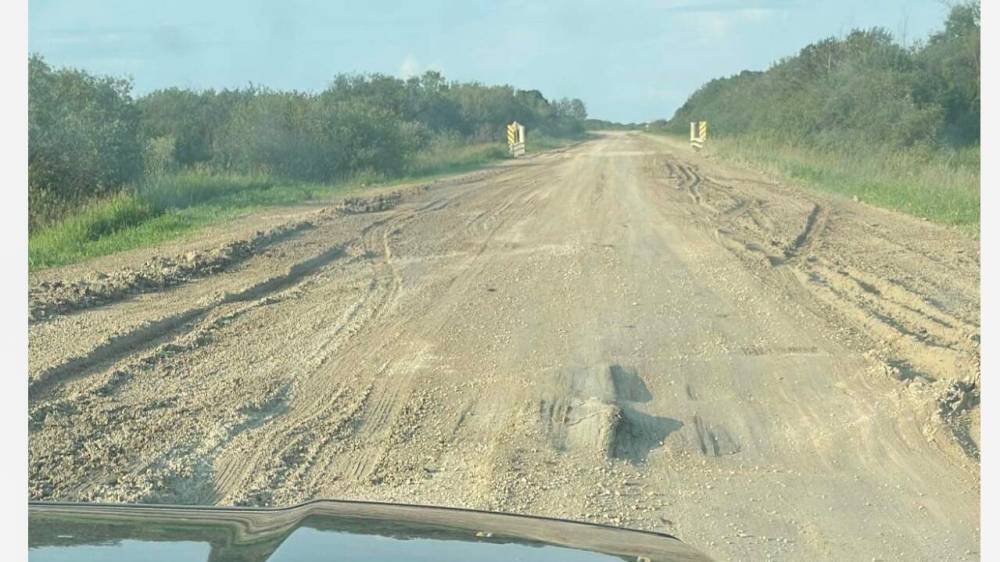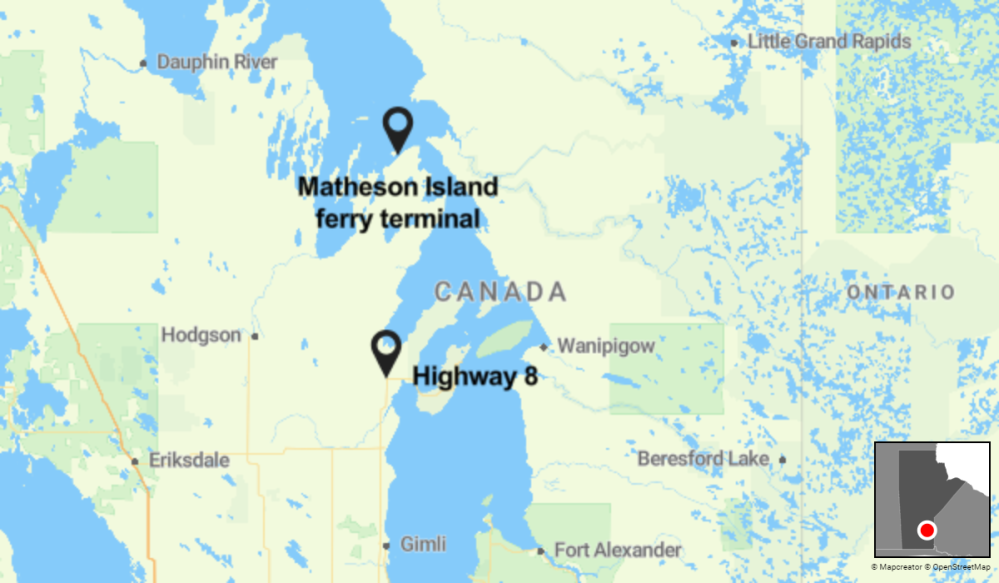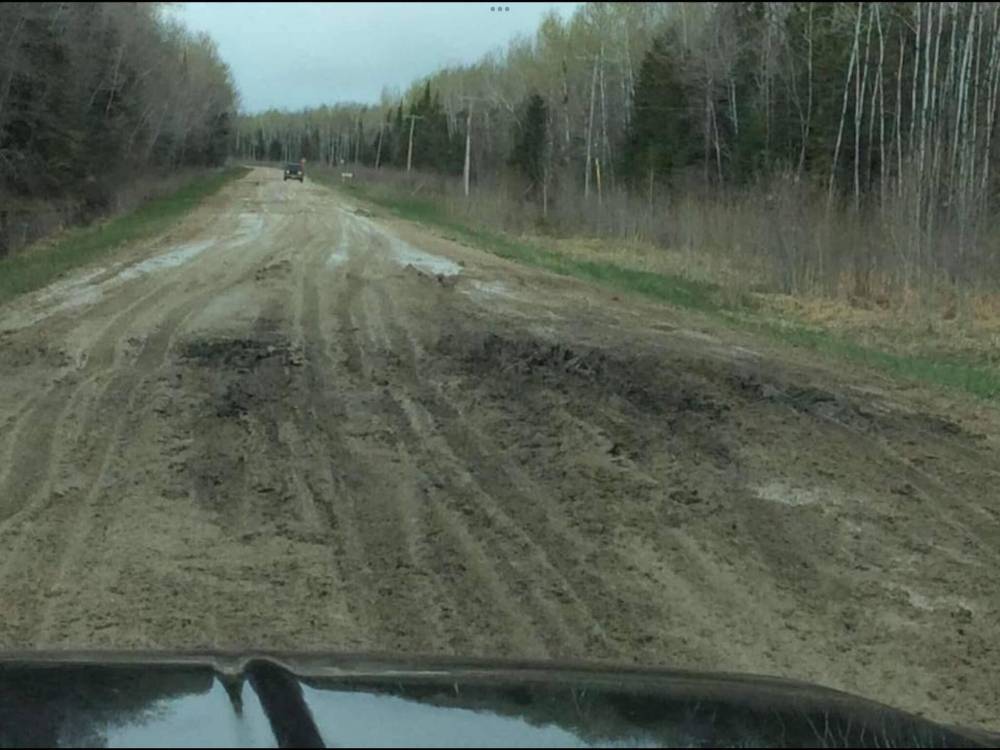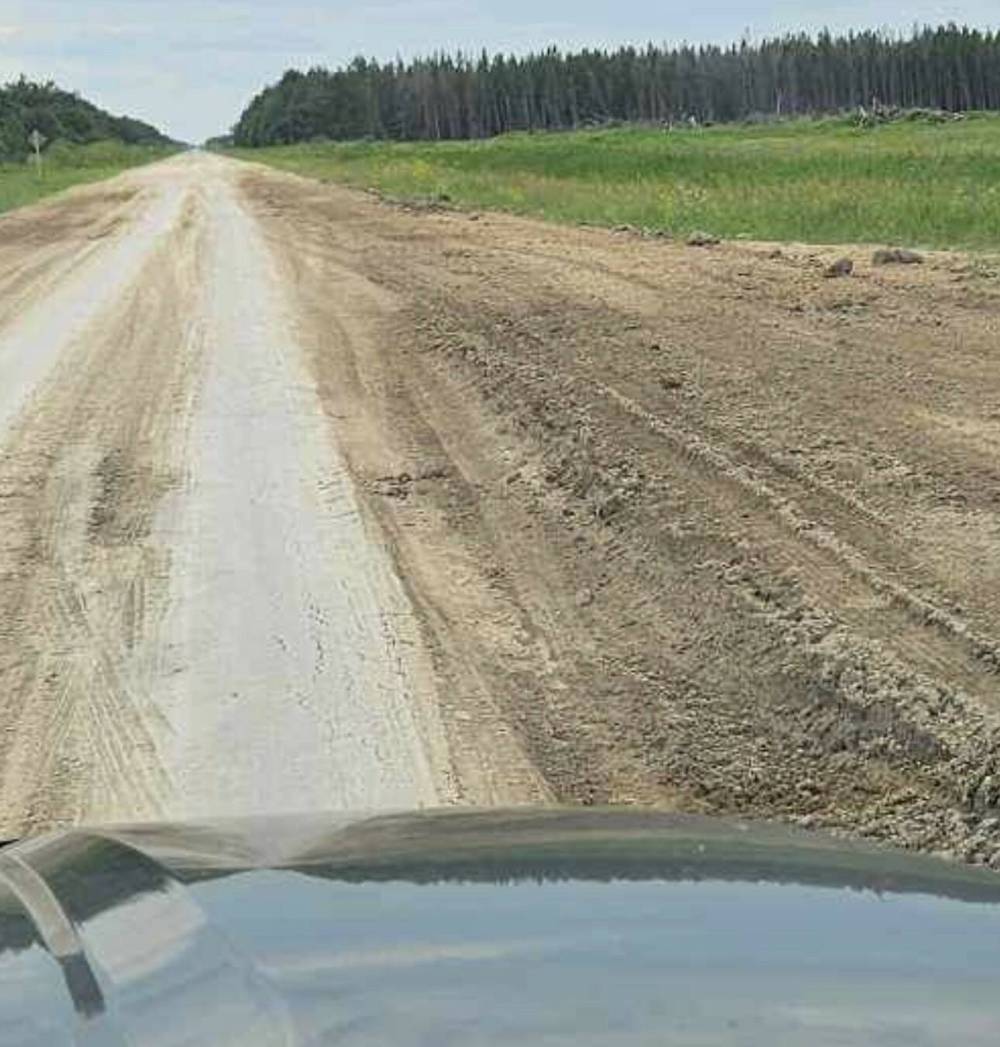Colleen Weibel and others who live or work along a scarred provincial road in the Interlake are tired of facing an anxiety-inducing drive every time they use the “dangerous” route.
Weibel said Provincial Road 234 — a 92-kilometre, two-lane stretch — turns into “mud and slop” when it rains heavily, and is deeply rutted and bumpy when dry.
“Over the last 15 to 20 years, there has been a substantial increase in traffic, but very basic or minimal improvements to the road,” said Weibel.
“It has really deteriorated. The rain and all of the traffic have contributed to a very dangerous highway.”

Weibel is part of a group that’s calling for the rebuilding of the gravel road, which runs between Highway 8 and the Matheson Island cable ferry terminal, about 220 kilometres north of Winnipeg, on the western side of Lake Winnipeg.
The group’s online petition for improvements reflects concerns in many communities about sections of highways or secondary roads.
Weibel and her husband have lived year-round in the Little Deer cottage subdivision on Lake Winnipeg for about 15 years.
Over that time, passenger vehicle and heavy truck traffic has increased due to cottage developments and peat moss mining, she said.
Weibel has never seen the road in such bad shape.

She said the province has a duty to provide safe infrastructure, especially when its decisions or project approvals result in increased traffic.
Weibel worries the poor condition of the road will slow down ambulance response times.
This spring and summer, PR 234 became “almost impassable” after episodes of heavy rainfall, she said.
“It caused a lot of anxiety for people having to travel that highway,” said Weibel. “People were feeling scared to travel. They were feeling frustrated and trapped. They were feeling neglected and abandoned.”
Passenger vehicles “bottom out” when they hit deep ruts or large bumps, with some sustaining tire, axle or suspension damage, she added.

Weibel and others recently sent letters and made phone calls to the NDP government to push for a rebuild.
“If it doesn’t have the proper base and proper maintenance, it just deteriorates,” said Weibel. “We’ve really stressed the highway needs to be fixed for everyone. It needs to be safe the whole way up.”
New gravel was put down last week and Weibel said it brought some comfort, but it is a “Band-Aid solution.”
She said the road was neglected by past NDP and Progressive Conservative governments. She assumes it was due to costs, the area’s small population or the absence of a unified call for improvements.
“It’s a little forgotten area that we live in,” said Weibel. Most of PR 234 is located in Division 19, an unorganized area.
Premier Wab Kinew Thursday said he gets an “earful” about the condition of highways and roads when he travels around Manitoba.
“People want to see more work done on maintenance and fixing potholes,” he told reporters at an unrelated event in Grosse Isle. “A huge amount of the conversations we have day-to-day around the province are about hearing those issues, and then trying to get resources out the door to fix them.”
In April, the NDP and Opposition Tories sparred in the legislature over the capital budget for highway infrastructure.
The NDP’s 2024 budget allocated $500 million, down from $557 million under the former PC government in the last fiscal year.
“People want to see more work done on maintenance and fixing potholes.”–Premier Wab Kinew
At the time, Transportation and Infrastructure Minister Lisa Naylor claimed it was not a cut, because the Tories underspent and committed the same amount the previous year. She insisted ongoing projects would not be disrupted.
The NDP’s budget document points to a nearly $8-million increase for highway maintenance operations, including a pilot program for 24-hour coverage on the Perimeter Highway.
“We’ll be there to respond when you bend our ear about a specific stretch of highway or a specific pothole, but the real long-term fix is just to focus more on that day-in, day-out maintenance that the inventory across the province requires,” said Kinew.
The transportation and infrastructure department is responsible for about 20,000 kilometres of provincial highways and roads. Gravel roads represent about 6,000 km of the network.
“As our province grows, traffic patterns change and evolve, and (the department) continually reviews and reassesses road conditions across the provincial highway network,” a spokesperson wrote in an email.
Periods of heavy rain since May have resulted in potholes and gravel deterioration along the network, the spokesperson noted.
“Long-lasting wet conditions make road maintenance more challenging,” the spokesperson wrote. “Work on roads that require further attention will continue, when drier conditions allow, to address the adverse road conditions.”
The department’s five-year plan includes 52 kilometres of gravel restoration for PR 234 at a cost of $2.2 million. There are no current plans to pave the road.
People who live next to PR 406 near Elma, about 75 km east of Winnipeg, raised similar concerns about that road’s condition in interviews with the Free Press last month.
Spring and summer downpours made the road soft and muddy. Residents said the road was rutted and very dusty when dry.
The government spokesman said nearly nine km of planned gravel restoration work has been completed since then. Dust-control chemicals were applied.
Manitoba, for years, has faced calls to boost its spending on highways and roads.

“The lack of investment to maintain provincial infrastructure is cause for concern, particularly when we experience above-average precipitation and warmer temperatures — like we did earlier this year — which wreaked havoc on roads across the province,” Association of Manitoba Municipalities president Kam Blight said in a statement.
“Moreover, restrictions on provincial roads often result in traffic being diverted onto municipal roads, causing significant damage to municipal infrastructure.”
Blight said his association supports municipal leaders who call on the province to increase the maintenance budget and provide financial aid for municipal road rehabilitation and reconstruction projects.
The Progressive Conservatives issued a statement that said they had “prioritized PR 234 for upgrades in 2025 and 2026″ as per (the department’s) five-year plan and the Manitoba Parks 10-year renewal strategy.
“After cutting $57 million from this year’s highways budget, the NDP minister needs to confirm today that this project is still on the books for next year,” said PC transportation and infrastructure critic Konrad Narth said in a statement.
— With files from Gabrielle Piché
chris.kitching@freepress.mb.ca

Chris Kitching
Reporter
Chris Kitching is a general assignment reporter at the Free Press. He began his newspaper career in 2001, with stops in Winnipeg, Toronto and London, England, along the way. After returning to Winnipeg, he joined the Free Press in 2021, and now covers a little bit of everything for the newspaper. Read more about Chris.
Every piece of reporting Chris produces is reviewed by an editing team before it is posted online or published in print — part of the Free Press‘s tradition, since 1872, of producing reliable independent journalism. Read more about Free Press’s history and mandate, and learn how our newsroom operates.
Our newsroom depends on a growing audience of readers to power our journalism. If you are not a paid reader, please consider becoming a subscriber.
Our newsroom depends on its audience of readers to power our journalism. Thank you for your support.